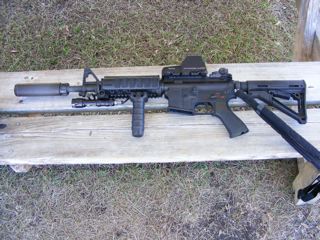Many people refer to Title II firearms (Silencers, SBR, SBS, and Machine Guns) as Class 3 weapons) as Class 3 firearms or weapons. The Class 3 terminology is generally used with a dealer license and not a type of weapon but a license. SOT means special occupational tax and refers to the tax due upon transfers of items restricted by the NFA ( Generally $200 except for AOWs which have a tax of only $5)
If you purchase a Title II firearm from a dealer or individual out of your state, you will need to use a class 3 transfer agent to move the items across state lines. If you purchase from an individual within your state then no transfer agent is required.
 NFA Gun Trust Lawyer Blog
NFA Gun Trust Lawyer Blog




 With the recent discussions about the potential federal ban on assault weapons being reinstated, I thought it would be interesting to see which states already have bans on Assault Weapons
With the recent discussions about the potential federal ban on assault weapons being reinstated, I thought it would be interesting to see which states already have bans on Assault Weapons